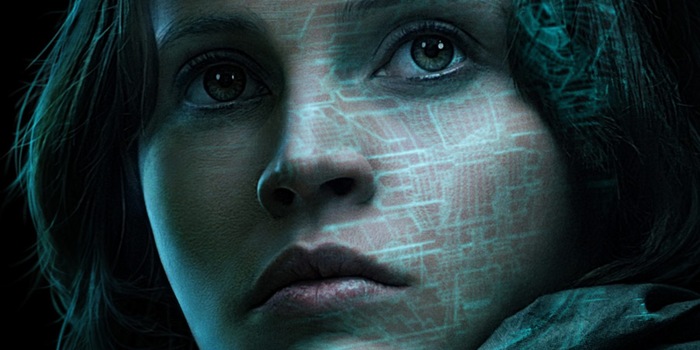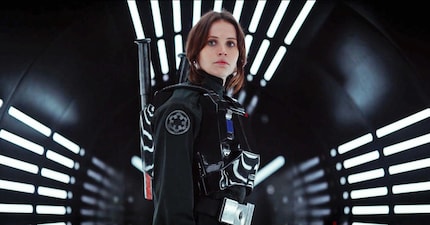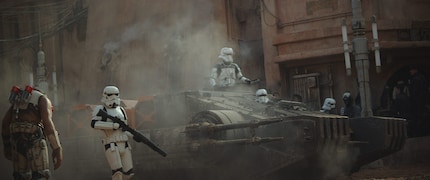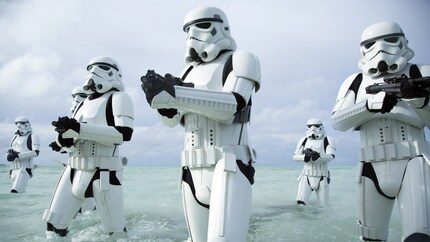

Rogue One: A Star Wars Story - The War in Star Wars
Star Wars Rogue One is being released in Swiss cinemas. I've already seen the eagerly awaited film and give you everything you need to know. And don't worry: this review will be spoiler-free.
The Star Wars are back. Well, the real war. The original. Not the sequel or the prequels. "Rogue One: A Star Wars Story" is a so-called mid-quel, meaning it takes place somewhere between the plots of Parts III and IV of the "Star Wars" series. In this case, the troop's mission is known as "Rogue One".
Fights on the ground, in the air and in the head
"Rogue One" depicts the war in Star Wars. Although the crew of the Millennium Falcon decides the war, viewers have never seen the theatres of war and the big battles that are always talked about. A battle here and there, sure, but that was probably all that was possible at the time for budget reasons. In the second trilogy (parts I-III) - the one that explains the beginnings of the war but is often ignored by fans - there was one big battle.

In "Rogue One", the Empire and the Rebel Alliance are not only in open battle, but also in a constant arms race. The rebels, technologically inferior, try to stay one step ahead of the Empire by any means necessary, especially with espionage and political assassinations. The Emperor's forces include Star Destroyers, countless TIE fighters and a seemingly endless army of Stormtroopers.
Now the Empire has completed a new weapon: The Death Star. This massive base of operations is the size of a moon and can blow up entire planets with its powerful laser. Naturally, the rebels are afraid, but are prepared to risk many lives to ensure that this gigantic weapon is never used.
Important to this plan is Jyn Erso (Felicity Jones), whose father was forced by Director Orson Krennic to be the architect of the Death Star.
All the rebels and Jyn have to do is steal the Death Star plans from a base on the shielded planet Scarif and then fly an attack on the Death Star.
The rebel alliance risks everything for this.
A film for an explanation
"Rogue One" is a visual firework that borrows ideas from the great war films. Battles are fought pointlessly in places, simply so that someone has one less tank, or so that there are two less Stormtroopers on the road. The rebels look in vain for a decisive blow against the Empire in the film. But as pointless and monotonous as the battles may be, they are never boring. They all seem important, they are given a lot of weight and the characters of the "Rogue One" swashbuckler quickly grow on you, which makes the emotional investment in them even greater.

This is a good thing, because purely in terms of the story, "Rogue One" occupies a somewhat strange place. "Star Wars" fans know how the whole story ends: In the first film of the original trilogy - Episode IV, that is - Luke Skywalker (Mark Hamill) flies a successful attack aboard an X-wing fighter, exploiting the vulnerability identified by "Rogue One".
Fans have wondered for decades how it is possible for such a massive construction project as the Death Star to be destroyed with just one torpedo. This film provides the explanation. To many, it may seem a bit excessive to make an entire film just for this bit of "Star Wars" trivia, but it was worth it. Not only does the scenery look beautiful - the film was shot in Iceland and the Maldives, among other places - but the story also works beautifully. This can probably also be attributed to the fact that only a few characters that fans know from the other parts of the saga appear in the film.
This allowed director Gareth Edwards ("Monsters", "Godzilla") to concentrate entirely on the events surrounding the rebel troupe, whose adventures take place on countless planets, without having to worry about getting in the way of the other films. The side effect: somehow the film feels as if the original trilogy is far away. The legacy of Luke Skywalker and his crew can be felt in last year's "Star Wars: The Force Awakens", but less so in "Rogue One".

This also means that the film feels a little overloaded at times, as not only do characters have to be introduced and developed, but also theatres of war, technology and political situations. However, Edwards skilfully counteracts this with the battle scenes, because while blaster fire flashes through the air, the story often takes a short break and is reduced to "go from point A to point B" with a few small mental exercises in the middle, such as a small confusion manoeuvre on the runways of the planet Scarif.
"Rogue One" is a successful film, albeit risky in the context of Star Wars. The name Skywalker is not mentioned, Han Solo (Harrison Ford), Chewbacca (Peter Mayhew) and co. are a long way off. Only one is there. The one who has his own theme tune that goes round the world. The man to whom the Imperial March is dedicated: Darth Vader.
My tip: check him out.
You might also be interested in this
Journalist. Author. Hacker. A storyteller searching for boundaries, secrets and taboos – putting the world to paper. Not because I can but because I can’t not.
From the latest iPhone to the return of 80s fashion. The editorial team will help you make sense of it all.
Show all

